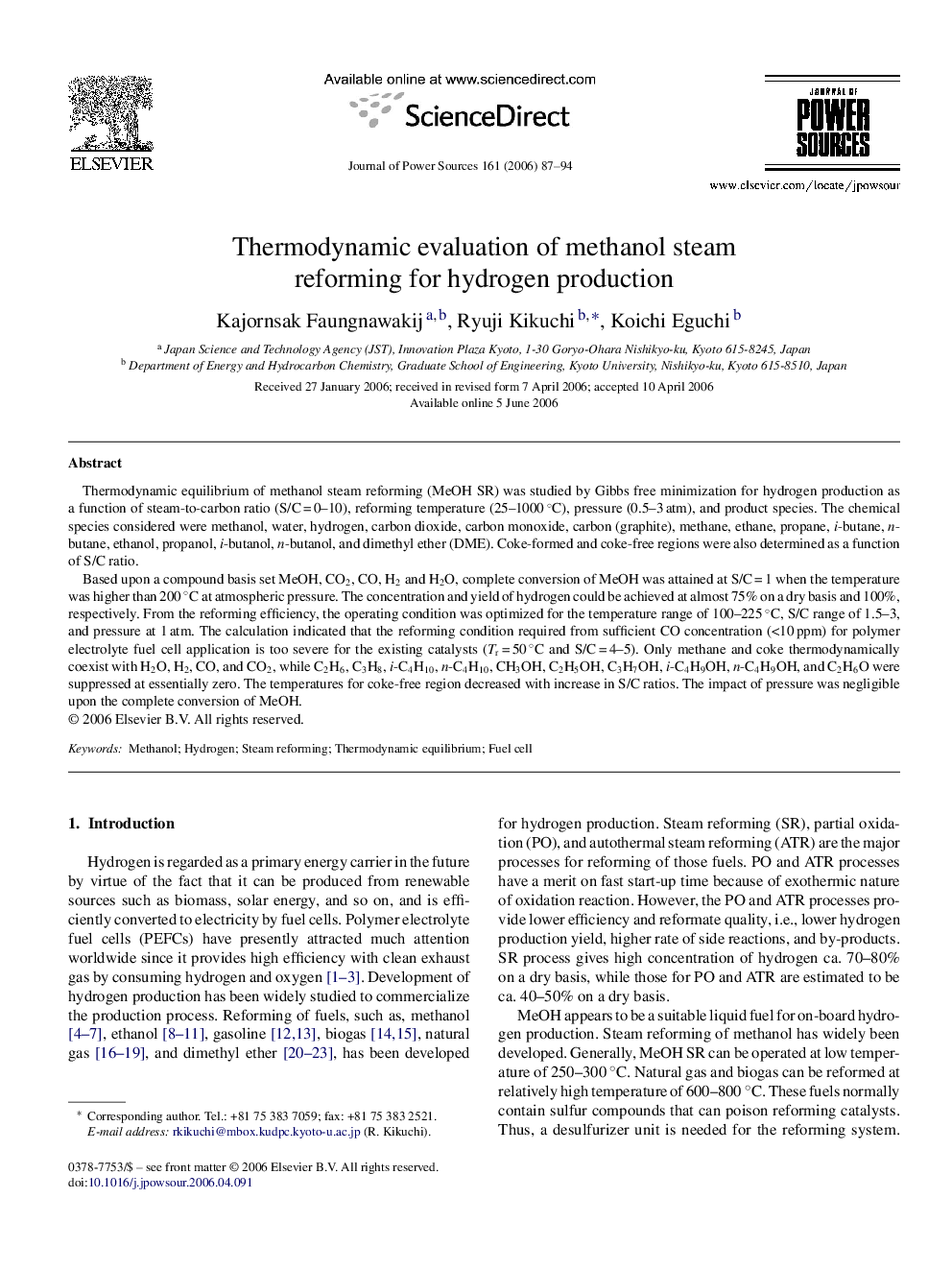| Article ID | Journal | Published Year | Pages | File Type |
|---|---|---|---|---|
| 1286976 | Journal of Power Sources | 2006 | 8 Pages |
Thermodynamic equilibrium of methanol steam reforming (MeOH SR) was studied by Gibbs free minimization for hydrogen production as a function of steam-to-carbon ratio (S/C = 0–10), reforming temperature (25–1000 °C), pressure (0.5–3 atm), and product species. The chemical species considered were methanol, water, hydrogen, carbon dioxide, carbon monoxide, carbon (graphite), methane, ethane, propane, i-butane, n-butane, ethanol, propanol, i-butanol, n-butanol, and dimethyl ether (DME). Coke-formed and coke-free regions were also determined as a function of S/C ratio.Based upon a compound basis set MeOH, CO2, CO, H2 and H2O, complete conversion of MeOH was attained at S/C = 1 when the temperature was higher than 200 °C at atmospheric pressure. The concentration and yield of hydrogen could be achieved at almost 75% on a dry basis and 100%, respectively. From the reforming efficiency, the operating condition was optimized for the temperature range of 100–225 °C, S/C range of 1.5–3, and pressure at 1 atm. The calculation indicated that the reforming condition required from sufficient CO concentration (<10 ppm) for polymer electrolyte fuel cell application is too severe for the existing catalysts (Tr = 50 °C and S/C = 4–5). Only methane and coke thermodynamically coexist with H2O, H2, CO, and CO2, while C2H6, C3H8, i-C4H10, n-C4H10, CH3OH, C2H5OH, C3H7OH, i-C4H9OH, n-C4H9OH, and C2H6O were suppressed at essentially zero. The temperatures for coke-free region decreased with increase in S/C ratios. The impact of pressure was negligible upon the complete conversion of MeOH.
